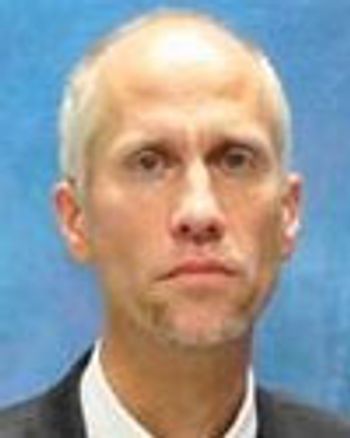
The author concludes that people inappropriately placed in psychiatric hospitals can lead to grave violation of human rights.

The author concludes that people inappropriately placed in psychiatric hospitals can lead to grave violation of human rights.

A look at the 2015 joint American Society for Adolescent Psychiatry (ASAP) and International Society for Adolescent Psychiatry and Psychology (ISAPP) Scientific Meeting in March. There, the author will be presenting two sessions that address adolescent sexuality and sexual development issues.


Substantial progress has been made in the development of etiologic models of intimate partner violence and interventions for individuals who assault their intimate partners. These authors provide details.

Sexual abuse is shockingly common in the US prison system. It has been reported that about 200,000 prisoners are victims of coercive sex each year. Most of those abused are psychiatric patients misplaced in prison.

Psychiatrists need to understand how living in violent families and neighborhoods increases the likelihood of trauma and the psychiatric sequelae associated with it as well as how to respond in the aftermath.

Because the aftermath of sexual violence can result in suicidal feelings, depression, PTSD, and other mental disorders, clinicians play an important role in treating both victims and perpetrators and helping to prevent further damage.

Diagnosing rape as mental disorder is an improper use of psychiatric diagnosis and promotes the abuse of psychiatric commitment to further what would otherwise be an unconstitutional form of preventive detention.

Few circumstances confront the psychiatrist with more complex, painful, and potentially problematic clinical dilemmas and challenges than the treatment of the incest victim. Here are some factors that may lead to memory of a trauma becoming inaccessible or withheld by a patient.

In treating a female who sexually abuses a minor, what should the clinician keep in mind? Is the treatment plan different for a female offender than a male?

Here, Mr Hazelwood answers questions about serial murderers that are commonly posed to him. The term serial murderer (or serial killer) was not even a part of the forensic lexicon until the 1970s . . .

This article, based on a comprehensive review by Weathers and associates, provides a selective and brief summary of trauma and PTSD assessments in adults.

Every case of patient violence against clinicians provides lessons to be learned in safety management. Here: some key points that can enhance physician safety and help minimize the risks.

Here is a “pocket guide” for clinicians drawn from actual cases. With some modification, the list could become a patient information sheet or office policy.

There have been four ringing rejections of the concept of paraphilic rape--in DSM-III, in DSM-IIIR, in DSM-IV, and in a 1999 APA Task Force report. The circumstances surrounding the latter three decisions are fairly well known, the first less so.

The treatment of incest victims is often painful and difficult. With patience, the vast majority of those who have experienced incest can experience considerable improvement and enjoy an enhanced quality of life without succumbing to repeated victimization.

The most disturbing turbulence at the boundary between psychiatry and the law is the misuse of a makeshift psychiatric diagnosis to justify the involuntary, indefinite psychiatric commitment of rapists. This is a disguised form of preventive detention and an abuse of psychiatry.

With the transition of patients with mental illness from the beds of psychiatric institutions into the community the need for knowledgeable mental health professionals continues to grow. Correctional psychiatry has evolved in recent years and presents special challenges for clinicians, which this handbook deftly addresses. Contributing authors with various backgrounds provide a broad range of expertise.

A small percentage of educators use their position of power to sexually exploit their students. While it is assumed that men are often responsible for this type of behavior, in recent years, a number of high-profile cases of female educator sexual misconduct have been covered by the media.

Decreasing the Clinician’s Risk

Perhaps one of the positive things to come out of the Kansas v Hendricks wave of sexually violent predator (SVP) commitment laws during the past decade is that our knowledge base on sex offenders has grown tremendously.

In the past few years, college mental health issues have received increasing attention by the mental health community, the public, administrators, and legislators. Events such as the death of MIT student Elizabeth Shin and the subsequent legal battle, and the series of suicides at NYU a few years ago received prominent media coverage.

A 43-year-old woman presented to the ED at 5:30 am on a weekday. While being triaged, she indicated she was hesitant to speak with anyone. The patient reported to the consulting psychologist that she had been deployed to Iraq as reservist nurse 2 years earlier. During that time, an unknown assailant whom she believed to be an Iraqi national working with military security forces sexually assaulted her. The veteran confided that she had been too embarrassed and ashamed to report the assault.

Since the time of Homer, warriors have returned from battle with wounds both physical and psychological, and healers from priests to physicians have tried to relieve the pain of injured bodies and tormented minds.1 The soldier’s heartache of the American Civil War and the shell shock of World War I both describe the human toll of combat that since Vietnam has been clinically recognized as posttraumatic stress disorder (PTSD).2 The veterans of Operation Iraqi Freedom (OIF) and of Operation Enduring Freedom (OEF) share with their brothers and sisters in arms the high cost of war. As of August 2009, there have been 4333 confirmed deaths of US service men and women and 31,156 wounded in Iraq. As of this writing, 796 US soldiers have died in the fighting in Afghanistan.3

Through high-profile media cases and in film, the American public has had glimpses into the psychological phenomenon and criminal behavior known as stalking. But do these glimpses truly represent the types of stalking offenses that are commonly perpetrated? Academicians and public policy makers have only begun to focus attention on stalkingin the past 10 to 15 years. As is often the case, the dissemination of information relevant to treating clinicians often lags behind by many years. Thus, many mental health professionals have not been adequately trained to recognize stalking behavior and to treat those who perpetrate it.